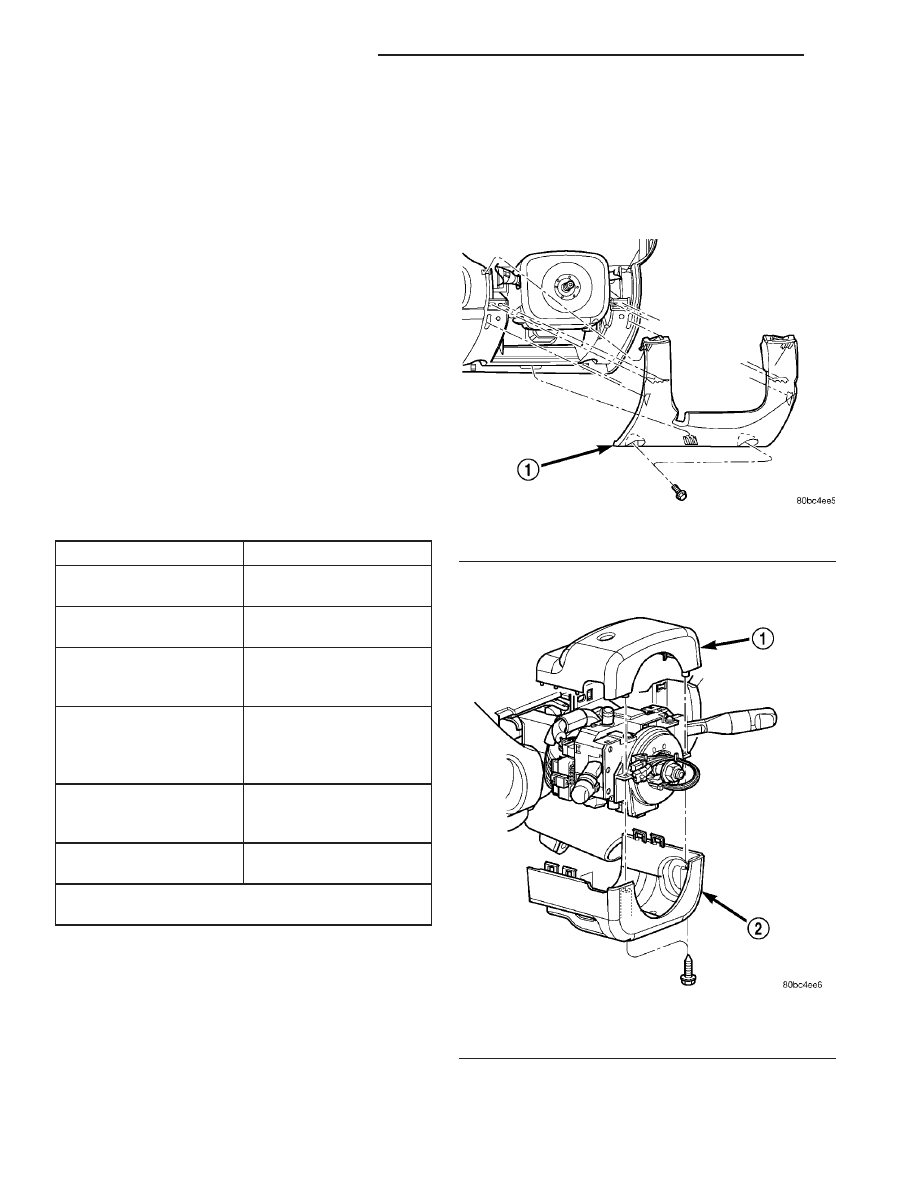Chrysler PT Cruiser. Manual - part 831

(4) Return the ignition key to the “LOCK” position
(Fig. 311).
(5) Connect the BTSI solenoid connector (Fig. 310).
(6) Install
steering
column
upper
and
lower
shrouds (Fig. 309).
(7) Install steering column lower cover (Fig. 308).
(8) Verify that shifter is in gated “PARK”.
(9) Install the cable core end to the plastic cam of
the shifter mechanism. Snap the shifter/ignition
interlock cable end fitting into the groove in the gear-
shift mechanism as shown in (Fig. 307).
(10) Adjust interlock cable/system as follows:
If interlock cable is being replaced, it will come with
an adjustment pin. Remove the pin from the cable
and allow the cable to “self-adjust”. Lock cable
adjustment by pressing down on the adjuster lock
until bottomed at the cable housing. If interlock cable
is being re-used, no pin will be provided. Pry up on
cable adjuster lock to release and allow cable to “self-
adjust”. Lock cable adjustment by pressing down on
the adjuster lock until bottomed at the cable housing.
(11) Connect battery negative cable and ver-
ify interlock system operation as follows:
ACTION
EXPECTED RESPONSE
1. Turn key to the
9
OFF
9
position.
1. Shifter CAN be shifted
out of park.
2. Turn key to the
9
ON/RUN
9
position.
2. Shifter CANNOT be
shifted out of park.
3. Turn key to the
9
ON/RUN
9
position and
depress the brake pedal.
3. Shifter CAN be shifted
out of park.
4. Leave shifter in any
gear and try to return key
to the
9
LOCK
9
or
9
ACC
9
position.
4. Key cannot be
returned to the
9
LOCK
9
or
9
ACC
9
position.
5. Return shifter to
9
PARK
9
and try to remove
the key.
5. Key can be removed
(after returning to
9
LOCK
9
position).
6. With the key removed,
try to shift out of
9
PARK
9
.
6. Shifter cannot be
shifted out of
9
PARK
9
.
NOTE: Any failure to meet these expected
responses requires system adjustment or repair.
(12) Install shifter bezel (Fig. 306).
(13) Install center console assembly (Fig. 305).
(14) Install gearshift knob and tighten set screw to
2 N·m (17 in. lbs.) torque (Fig. 304).
(15) Connect battery negative cable.
SHIFT INTERLOCK
MECHANISM
REMOVAL
(1) Remove the steering column lower cover (Fig.
314).
(2) Remove the steering column upper and lower
shrouds (Fig. 315).
Fig. 314 Steering Column Lower Cover
1 - LOWER COVER
Fig. 315 Steering Column Shrouds
1 - UPPER SHROUD
2 - LOWER SHROUD
21 - 278
40TE AUTOMATIC TRANSAXLE
PT
SHIFT INTERLOCK CABLE (Continued)